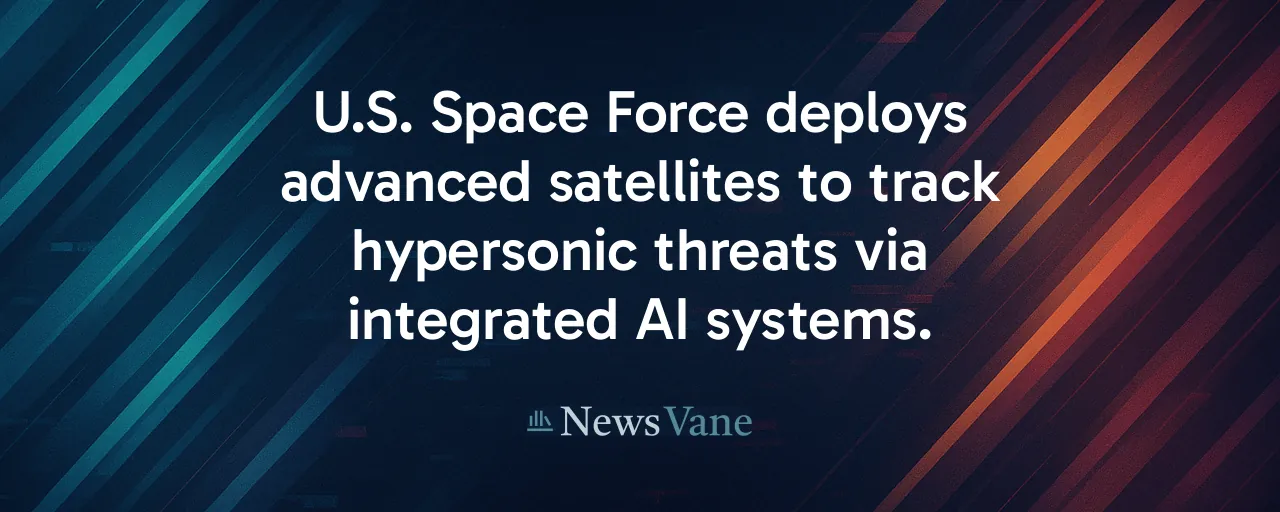A New Frontier in Missile Defense
On May 28, 2025, the U.S. Space Force unveiled its Medium Earth Orbit Space Operations Center in Boulder, Colorado, a high-tech facility designed to track advanced missile threats, including hypersonic weapons. Housed within the Boulder Ground Innovation Facility, this center connects satellites to ground systems, enabling rapid detection and response to evolving dangers. The announcement, made public on July 7, 2025, highlights a significant step in strengthening national security through space-based technology.
The opening of this facility also raises broader questions about the role of space in global defense. As nations invest heavily in missile warning systems, concerns about cost, transparency, and the potential for an arms race in orbit emerge. The challenge lies in advancing security while maintaining economic balance and international cooperation. Innovation, oversight, and diplomacy will be crucial for the United States to achieve these goals.
The Technology Driving Detection
The new center leverages Medium Earth Orbit satellites, positioned between 8,000 and 20,000 kilometers above Earth, to monitor missile activity with precision. These satellites offer a wider field of view than Low Earth Orbit systems and sharper data than Geosynchronous Orbit platforms. By integrating artificial intelligence and cross-domain data fusion, the facility processes vast amounts of information, reducing false alarms and enabling faster decisions.
Research supports the effectiveness of this multi-orbit approach. Studies indicate that combining Low, Medium, and Geosynchronous orbits minimizes system failures, ensuring continuous coverage. For instance, AI-driven data analysis has cut false-alarm rates by nearly half, according to defense technology reports. This capability is critical for tracking hypersonic missiles, which maneuver unpredictably and challenge older systems like the Space-Based Infrared System.
Economic and Social Trade-Offs
The Boulder facility brings tangible benefits, including approximately 1,200 new aerospace jobs and partnerships with the University of Colorado to advance STEM education. Innovations in artificial intelligence developed here may also aid disaster response, offering civilian applications. However, the program's lifecycle cost, projected at $28 to $32 billion through 2045, prompts scrutiny in a constrained defense budget.
Local communities face housing and infrastructure pressures due to the influx of workers. Meanwhile, taxpayers question the opportunity costs, as funds allocated to space defense could address pressing domestic needs like healthcare or education. Balancing these priorities requires transparent budgeting and clear performance milestones to ensure public support.
Navigating Global Tensions
The strategic need for advanced missile tracking stems from rising global threats. Nations like China and Russia have developed hypersonic weapons that evade traditional defenses, necessitating robust detection systems. The Space Force's efforts aim to close these gaps, but they also risk escalating tensions. Increased militarization of space could spark an arms race, with nations deploying more satellites and anti-satellite weapons, potentially creating hazardous orbital debris.
Historical context underscores the stakes. Since the 1950s, projects like MIDAS pioneered infrared warning systems, evolving into today's complex architectures. Past arms races show that unchecked escalation destabilizes global security. Diplomatic engagement, such as sharing early-warning data with allies like the United Kingdom and Japan, can build trust and reduce miscalculations.
Legal and Ethical Crossroads
The Outer Space Treaty of 1967 permits military support satellites but bans weapons of mass destruction in orbit. The new center complies with these rules, focusing on defensive tracking. However, rapid automated systems raise concerns about decision-making authority, as algorithms could trigger responses before human oversight, complicating constitutional war-powers debates.
Collaboration with small businesses through SpaceWERX and open-architecture systems fosters innovation and competition, lowering costs. Still, intellectual property disputes over government-funded software and the need for cybersecurity audits highlight the complexity of scaling this technology responsibly.
Forging a Balanced Approach
To address these challenges, phased funding tied to clear milestones can ensure the program delivers results without unchecked costs. Non-binding international agreements, like those discouraging debris-generating anti-satellite tests, preserve defensive capabilities while promoting orbital safety. Engaging allies in data-sharing initiatives strengthens collective security and reduces escalation risks.
Transparency is equally critical. A bipartisan oversight board could monitor costs, schedules, and cybersecurity, balancing secrecy with public accountability. By adopting these measures, the United States can maintain a technological edge while fostering stability.
The Boulder facility represents a pivotal moment in space-based defense. Its success depends on blending cutting-edge technology with prudent governance and global cooperation. By prioritizing innovation, fiscal responsibility, and diplomacy, the nation can secure its future without fueling conflict, ensuring space remains a domain for progress and stability.
